 Algorithm for taking blood from a vein
Algorithm for taking blood from a vein
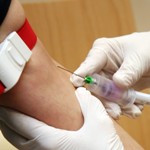
Consider the algorithm for taking blood from a vein for biochemical and serological studies.
On the eve of the study, the nurse warns the patient not to have breakfast, but to have dinner not late and not heavy. It should be explained that blood is taken on an empty stomach for analysis, because in this way the most reliable result is obtained.
Blood is taken from a vein in the morning, in the treatment room or at the bedside of the patient.
The nurse dresses appropriately, washes and disinfects her hands, puts on goggles, a mask and gloves. Next, prepare:
- trays;
- rubber band;
- sterile cotton balls or wipes;
- a syringe with a volume of 10 or 20 ml or vacuum tubes for taking blood for biochemical and serological studies.
The algorithm for taking blood from a vein consists of the following steps:
- All patient data is recorded in a journal or computer. Blood collection containers and directions are marked.
- The patient is placed or seated in a comfortable position with the elbow extended, with the inner surface up.
- A roller or a special pillow is placed under the elbow joint.
- A rubber tourniquet is applied to the middle third of the shoulder over a tissue napkin so as to obtain venous congestion.
- The patient is asked to clench and unclench his fist several times, repeating the movements until the veins are sufficiently filled with blood. The fist is fixed in a clamped position.
- The patient's skin is treated with a cotton ball or a sterile napkin with 70% alcohol, as with intravenous injection , twice: first a larger area of the skin, then a smaller one where the puncture will be made.
- The balls are dropped into the tray and the vein is punctured. If a syringe is used, the plunger should be positioned as close as possible to the edge of the needle cannula barrel so that there is no air in the barrel.
- The vein is punctured at an acute angle to the skin until it feels like it is in a void. The plunger of the syringe is gradually retracted, while the cylinder is filled with blood. Immediately after the needle enters the vein, the tourniquet is removed from the patient's shoulder. All the time of blood sampling, the nurse monitors the condition and well-being of the patient.
- When using a vacuum tube, the vein is punctured with a needle with an adapter, to which, after entering the vein, the test tube is attached. When taking blood for both biochemical and serological testing, the filled tube is disconnected, and the empty one is connected to the needle through the same adapter.
- After collecting the required amount of blood into the syringe, the needle is removed from the vein after pressing a cotton ball with alcohol to the puncture site. If vacuum systems are used, the needle is removed only after the tube is disconnected.
- The patient is asked to press the cotton ball and hold it on the elbow for 5 minutes.
- Labeled test tubes are placed in a special container for transportation to the laboratory.
- All instruments and used consumables are disinfected with subsequent disposal of disposable instruments. After disinfection, reusable materials are washed under running water, dried, if necessary, sterilized and put away in their designated storage areas.
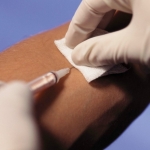

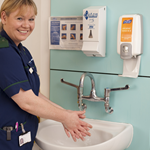
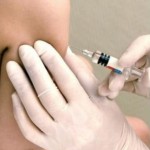
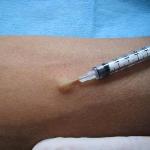
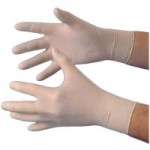
And why the hell is all the material not thrown away?!
We are talking about vacuum venous blood sampling systems, the use of which, unlike the traditional method, completely excludes contact with the patient's blood:
- the risk of infection of patients when the injection wound is contaminated with the hands of personnel is significantly reduced;
— provides a reliable way of hermetically transporting blood samples;
- test tubes do not break during centrifugation and during transportation;
the use of cotton-gauze swabs for clogging test tubes is excluded, which prevents occupational infection of personnel. — The advantage of this method of blood sampling is obvious. However, plastic needle holders are used for taking blood with vacuum tubes. Since 2004, their reuse has been prohibited in the United States, and in Russia, plastic needle holders are reused in almost all medical institutions. By the end of the shift, microscopic remains of biological fluid (blood) accumulate in the cannula of the needle holder, which can be transferred from patient to patient during the work shift. Needle holders are the same disposable medical products as needles and syringes. Using the same needle holder creates a high risk of infection for the patient.
Conscientious nurses decontaminate needle holders after each patient: they remove the already used needle from the needle holder with both hands, which inevitably leads to injury. Thus, the method designed to protect the medical worker (vacuum blood sampling) turns into another dangerous factor in the transmission of infection. It is necessary to train medical personnel in the correct technique of blood sampling, emphasizing that the needles, together with the needle holder, must be thrown into a puncture-proof container without disassembly with a groove to safely separate the needle from the needle holder.
Along with blood? In fact, what the hell - they played nurse - and threw out in FIG.
I would like to look at such "conscientiousness" - an interesting picture - a needle - with both hands.
Yah? What a news!
Those who repeatedly practice “needle holders” themselves know that they are violating all existing norms. You seem to be familiar with this practice. The article says nothing of the sort. Needles, by chance, do not reuse by rubbing them with alcohol ???
And I'm so afraid to take blood from a vein, even in this vacuum way. And one of my fears is that I am subconsciously afraid, including infections. How important it is that medical staff and clinic management understand the importance of using instruments safely. Thanks to the article, now I understand how this blood is beaten, and it's not so scary anymore :) Thank you!
Well, good! Once again, of course, it is better not to go into a vein at all. But if you really need it - it's not scary. 😉
To the question of fear: I have been working in medicine for more than 25 years, of which 20 years have been directly related to blood sampling procedures, injections, droppers. But if I donate blood, I always turn away, I don’t look at what my sister is doing there. And I think about something abstract. 🙂
One operating surgeon with great experience donates blood (with mandatory medical examinations) with such nervous tension! And he expresses it very actively - sitting on a chair, he not only turns away, but also stamps his feet, urges his sister with lamentations: “Oh. Well, are you there soon? Hurry, I can't!" and so on. And after such a short and simple procedure, it looks like a worker engaged in hard physical labor - after the shift. 🙂
When I was still a student, we were taught anesthesiology and resuscitation by a doctor - a very competent specialist, who knows a lot and has seen a lot, with the ability to quickly concentrate in difficult and emergency situations. So he admitted to us that he was very afraid of injections. He says: “I can easily do an operation for appendicitis myself. But as soon as I see HER with a syringe, I fall. 😀
Yah?
What a news! Those who repeatedly practice “needle holders” themselves know that they are violating all existing norms.
You seem to be familiar with this practice. The article says nothing of the sort. Needles, by chance, do not reuse by rubbing them with alcohol ??? Good afternoon, you’re so surprised in vain ... For example, they took blood from my wife’s vein using a “needle holder” taken from a table on which there were three more, and traces of blood were clearly visible on two .. Our appeal to the head of the department received an answer like “what You want .. the holders are REUSABLE .. They promised to discuss this at a meeting and give a written answer in a month. If possible, tell me where you can find material specifically explaining that the actions of the nurse were wrong (or right ??), preferably with links to the Guidance Documents. With respect and hope for an answer .. =)
Hello Eugene.
Sorry for the delay in replying - no internet access.
I'm not surprised at the reuse of needle caps, but at the fact that the author of the comment sets out common truths about the "correct education of nurses."
🙂 Although the situation, of course, is absolutely not funny.
What you are describing is an example of a flagrant violation of the sanitary and epidemiological regime in a medical institution. On a clean desktop, the instruments are not only unsterile, but also contaminated with blood - this is simply nonsense, a terrible neglect of their duties by medical workers. Claims should be directed primarily to management, which is not interested in purchasing the proper amount of disposable medical instruments. Although, blood on the desktop is ABSOLUTELY UNACCEPTABLE. And here it is no longer clear what the actions of nurses are based on.
Here is an extract from the instructions of Systems for taking venous blood:
More specific recommendations, as far as I know, have not yet been developed. You can study SanPiN 2.1.3.2630-10
Isn't the tourniquet removed after the end of blood sampling from the vein?
Are you sure about the reliability of the above algorithm?
1. Remove:
Thanks for the addition, clarification added.
2. In general, yes. You are not?
Apparently, you asserted yourself.
I disable comments on the article.